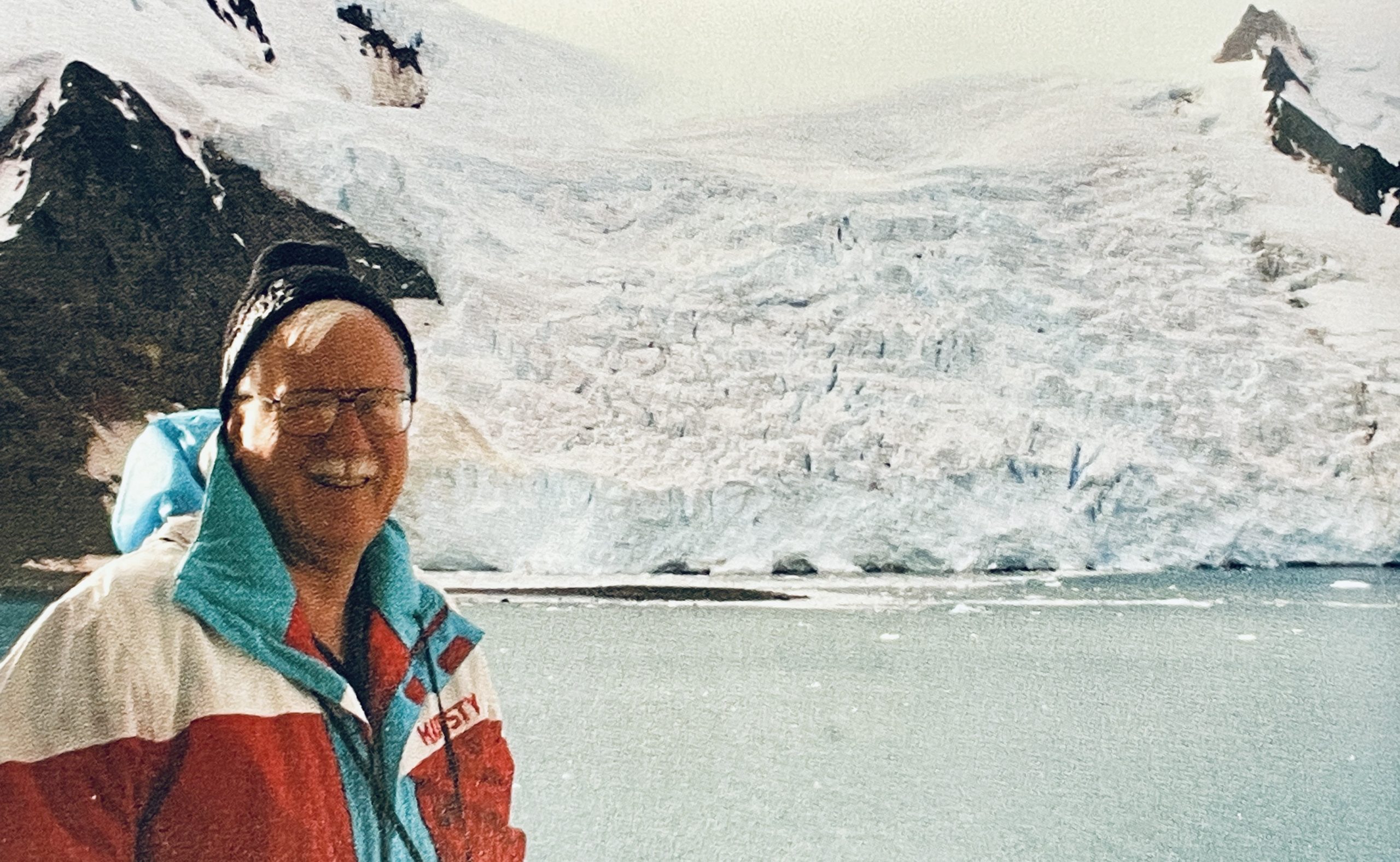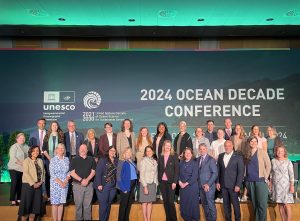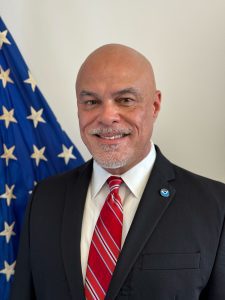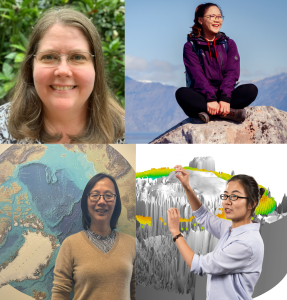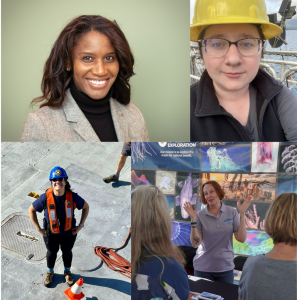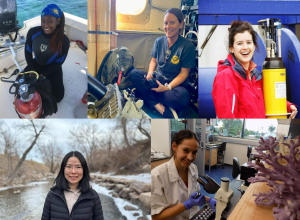Dr. Gary C. Matlock, NOAA Research’s Deputy Assistant Administrator for Science, is retiring on February 29, 2024. We sat down with Dr. Matlock to capture his thoughts on his illustrious career as a federal scientist and civil servant.
During your 30-year career with NOAA, what achievements or contributions are you most proud of, and how have you seen the organization evolve during your tenure?
I began my career with NOAA in 1970 as an employee of one of the predecessors of NOAA, the Bureau of Commercial Fisheries (part of the Department of Interior). A few months later, NOAA became a reality (partly by merging the Bureau into NOAA); I became a NOAA employee and began work on an M.S. at Texas A&M University in Galveston. I wanted a career of studying fish, but little did I know that I would rejoin NOAA in 1992 after a career with Texas Parks and Wildlife Department (TPWD) where I became the Director of Fisheries. I did get to study fish and convey the research results in scientific publications, presentations, university lectures, and other outlets. But, I also became part of an evolution that saw the research results used by other scientists and by the fishery management enterprise. I was intimately involved in the evolution of marine fisheries science–one in which the notion that marine fish populations could not be overfished to one in which regulating fishing was a requirement to correct past overfishing and prevent future overfishing domestically, internationally, and globally. That scientifically based evolution brought with it regulatory responsibilities to both TPWD and NOAA (through the National Marine Fisheries Service).
I was fortunate to be a part of the dramatic changes in TPWD and NOAA’s roles and responsibilities, which have gone from “studying fish” to regulating what people do. That opportunity led me to defend regulations and the science on which they were based in the judicial element of government. Not only did I benefit from the experiences of testifying in many courtrooms, but I also had the benefit of those willing to teach me how to navigate through the responsibilities of testifying under oath. I would like to think that I played a role in improving fisheries for society, and not just for fish, but also the habitat in which they exist and the people who rely upon them.
Can you share some significant research advancements or breakthroughs you’ve witnessed while at NOAA? How have these findings impacted our understanding of climate and weather patterns?
As a result of my time at the National Ocean Service, I benefited from a federal interagency committee’s characterization of climate change in five domains: temperature, water, carbon cycle, extreme events, and rising sea levels. NOAA has led the way in understanding how the effects of carbon emissions (especially) will impact these five expressions of climate change and has begun to increase the understanding of the impacts on ecosystems (including people). The recognition that people both affect and are affected by the environment in which they exist on this planet is becoming more accepted—kind of like the realization of the existence of overfishing. With this understanding, mathematical models are beginning to incorporate the effects of climate change on weather that are leading to better short and long-term, more holistic forecasts of the earth system. Scientifically based forecasts are at the heart of what NOAA does. Society is then afforded the opportunity to benefit from the positive and minimize the adverse impacts of our future by deciding how best to act today.
Technology advancements like cell phones, handheld and high-performance computers, the cloud, and remote meeting capabilities are a few of the enablers that have changed the way in which we conduct our science and transition it into applications. Additional technology like artificial intelligence/machine learning, uncrewed aerial and maritime systems, and application of genetic tools (‘omics) stand ready to become fully embraced by NOAA to foster an even brighter future for society.
As a leader, what were some of the major challenges NOAA Research faced, and how did you and your team work to overcome them?
One of the biggest challenges faced by any leader in NOAA is navigating the never-ending budget cycle to ensure adequate funding for the conduct of science in a government agency. But, NOAA’s funding is not adequate, in part, because of the lack of awareness of the significance of NOAA. As a result, the breadth and depth of NOAA’s potential success has not yet been realized. I believe this can be overcome by educating a wider audience of the role NOAA plays in their lives based on the science, products, and services NOAA provides. Further, impediments to operating long-term science endeavors like never-ending monitoring are presented by a federal budget process that is an annual (at best) enterprise. It is incumbent on us all to recognize that reality and build plans that account for what we can not change.
The diversity of NOAA’s missions, the global arena in which we work, the increasing need to integrate scientific disciplines, and the unending demand for timely, reliable information all require unique skills. Scientists and those who work with and support them bring their diverse backgrounds, approaches to problems and issues, and abilities to interact with others to NOAA. Their commitment to NOAA’s success has enabled incredible achievements. However, NOAA has not yet adequately tapped into the power of even greater human diversity. One of the solutions is NOAA’s Educational Partnership Program and the access it provides to the future, more demographically diverse scientists than now exists in NOAA. When more of the diverse talent pool being developed becomes a part of NOAA, the more likely we are to achieve more greatness.
One of the greatest challenges we all faced was the disruption, illness, and loss of so many loved ones caused by Covid-19–so much grief and so much adjustment needed. NOAA stood tall in responding to the demands created by this virus. The people who work for and with NOAA responded to an agency that showed us all the meaning of leadership, flexibility, reliance on science, and concern and care for the people who serve NOAA’s missions. Equally important was the demonstration of the power of people working together.
As you retire, what advice would you give to the next generation of scientists and leaders entering the field of oceanic and/or atmospheric research? What skills and qualities do you believe will be most important for addressing the ongoing challenges in this area?
Here are a few guiding ideas that have been useful to me:
- Listen, learn, and act (sometimes doing nothing is most appropriate)
- Respect yourself and others
- Honesty sprinkled with diplomacy
- I’m not always right
- Persistence laced with patience is useful
- Process matters
- There’s a difference between outputs and outcomes
- Integrity is precious and worth protecting
- Embrace change, but not change for change sake
- Integrating scientific disciplines is a worthwhile endeavor
Throughout my career I was given opportunities to advise decision makers and to be the decision maker. I found both roles powerful in effectuating a desirable outcome. However, it was important that I remembered which role I played in every situation. In my mission-driven, public service, science-based career, I reminded myself that science was a tool used to achieve purposes beyond doing science for science’s sake.
